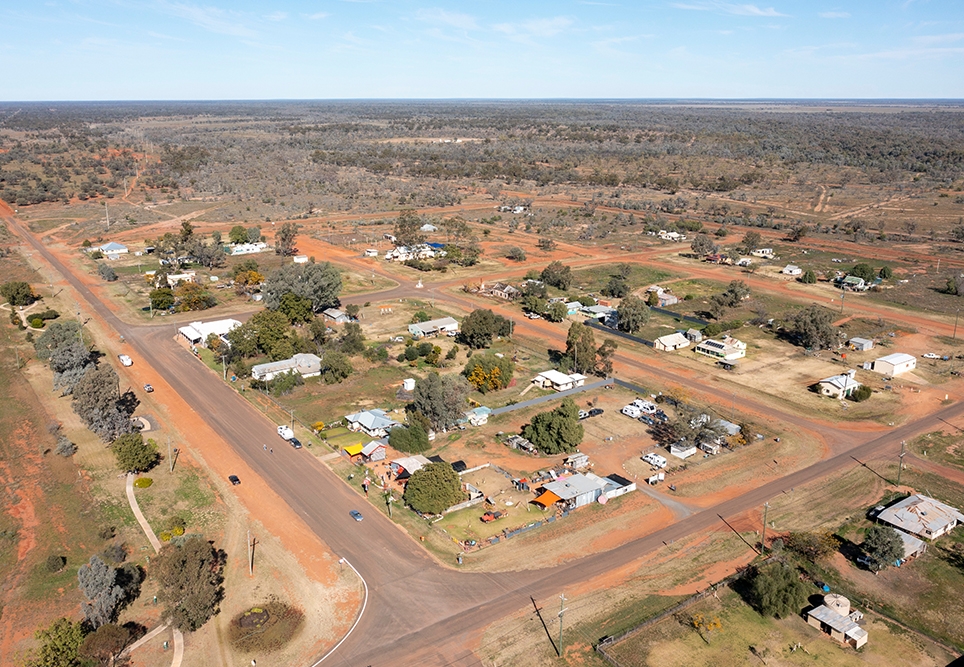This site may not work properly using older versions of Edge and Internet Explorer. You should upgrade your browser to the latest Chrome, Firefox, Edge, Safari, or any other modern browser of your choice. Click here for more information.
Your Stories
This is where we tell your stories, cover topical issues and promote meaningful initiatives.
Considerations for psychological debriefing in the workplace
When something traumatic happens, people often feel the need to ‘do’ something; to ‘fix’ people’s hurt, shock, sadness, or any other feelings they are experiencing. This is a natural reaction, as we don’t want to see our colleagues hurting, and we may fear that things will get worse if we don’t do something right now.
Critical Incident Stress Debriefing (CISD)* was originally developed and delivered in the 1980s in the US for emergency services workers after witnessing a number of high-profile traumatic events involving the United States Postal Service.¹⁺²
The CISD component was part of a comprehensive, systematic, and integrated multi-component crisis intervention, titled Critical Incident Stress Management (CISM). These CISM programs encompass many elements, including pre-crisis education, assessment, defusing, CISD and specialist follow-up for ongoing psycho-logical support if required. However, controversy arose when it was incorrectly perceived that the CISD part of the model would a) prevent post-traumatic stress disorder (PTSD), and b) be delivered as a stand-alone process.
Since around 1989, the terms Psychological Debriefing (PD) and CISD have become interchangeable, and represent one part of a structured, seven-step form of group crisis intervention that usually occurs within the first 24 to 72 hours after the incident. It would generally be delivered to a group of people who have experienced the same trauma, and it has very specific requirements for the group makeup of this structure,³ which are often not achievable in a rural or remote context (e.g. homogeneity of the group, members having approximately the same amount of exposure to the trauma).
Neither PD nor CISD were ever intended to be a stand-alone psychological treatment nor a form of counselling or psychotherapy.¹
Despite CISD being perceived as important after a traumatic event, there is evidence to suggest that it is not helpful and does not improve recovery from exposure to a critical incident. A meta-analysis of single-session debriefing after a psychological trauma found that those who received CISD did not have relief from PTSD symptoms, whilst those who had non-CISD interventions or no intervention had improved PTSD symptoms.⁴
Another study on CISD with first responders also found that there was no evidence that CISD was effective in the prevention of PTSD.⁵
In fact, the World Health Organisation recommends that:
“Psychological debriefing should not be used for people exposed recently to a traumatic event as an intervention to reduce the risk of post- traumatic stress, anxiety or depressive symptoms.“⁶
Although continued research is needed in this area, the results of these studies and others suggest that reactions to traumatic events are normal reactions to abnormal events, and that if a person has good mental health literacy around this, stays connected to others, has a supportive workplace, and has a self-care régime, the majority of people will recover naturally.⁷
Let’s look at two hypothetical scenarios of workplace psychological support responses to critical incidents. Both Geoff and Jackie are RANs and work in different remote communities.
Scenario one:
Geoff responded to and assisted with a vehicle rollover near the community where he works, involving a well-loved community member and their grandchild. The child sustained serious injuries and had to be medevac’d out. Unfortunately, the well-loved community member died at the scene.
The incident deeply affected all staff members at the clinic, and management wanted to help them. They organised a CISD for all members of staff via their EAP; attendance was compulsory. Two days after the incident, an external consultant was flown in to conduct the CISD. Geoff did not wish to attend as he was still trying to process what had occurred, along with all the different emotions he was experiencing. He wasn’t ready to share yet.
During the CISD, some members were ready to share and talked about observations and feelings that Geoff found confronting. This further confused him; he no longer felt safe to talk about what he was going through and was questioning if his feelings were ‘normal’. Geoff withdrew into himself, no longer talked to his colleagues about anything other than his day-to-day work, nor did he socialise with them. He felt completely alone and was questioning his sanity and if he was wrong for feeling how he did.
Geoff’s symptoms, such as hypervigilance, poor sleep (including nightmares), lack of appetite, poor concentration, and avoiding the place where the accident occurred, continued for weeks. His workplace had noticed these changes but told him the best thing to do would be to ‘get back on the horse’ and get stuck into work. His colleagues were unsure of what to say, so they said nothing. Geoff felt completely isolated; however, he believed he had to be stoic and keep going whilst continuing to feel like this.
Three months later, Geoff experiences a minor frustration at work and breaks down. Management terminates his contract, and he is required to leave the community to seek new employment.
Scenario two:
Jackie had a patient present to the clinic with severe head injuries and bleeding. The patient’s partner, who had inflicted the injuries, attempted to follow them in. Staff were able to lock the door and all other exits; however, the partner banged on doors and windows, yelling to be allowed inside. The police were called. However, they were attending another incident in a community one hour away. They stated they would attend as soon as possible. However, it would still probably be an hour and a half or more before they could attend. Jackie tried her best to assess the patient amongst the continuing noise the partner was making outside, and it was decided the patient needed to be medevac’d out. Throughout, the partner continued to bash on the clinic door and windows, throwing rocks at the building and windows, yelling, and attempting to gain access through windows and doors. Staff and the patient all feared for their lives should they gain access. The police arrived around two hours later, arrested the partner, and the patient was able to board the plane.
Once all staff were back at the clinic and safe, the team leader acknowledged what had happened and assured everyone that whatever they were experiencing were normal reactions to an abnormal event. The team leader then advised everyone they were free to speak with them or each other should they wish to debrief, but if they didn’t want to talk about it, that was ok too. Jackie pulled them aside and asked if she could have an hour to go somewhere quiet and process what had happened. Her team leader suggested she go back to her accommodation and come back when she was ready. The team leader also advised that they would ring in an hour and check in on Jackie, which they did.
Over the next few days, the team leader checked in with each staff member to see how they were going and asked how they could support them. Jackie stated she needed a day off, as she hadn’t been sleeping well, and they discussed different self-care options Jackie could try. She tried some mindfulness strategies, talked to friends back home on the phone, and caught up on lost sleep.
In the following weeks, Jackie felt strong enough to talk to others about the shared experience and was able to feel safe, heard and supported in her workplace. Her symptoms naturally resolved, and after a few weeks, she noticed that she was functioning as usual before the incident.
After a critical incident, staff want to feel supported and know that management and the organisation care about them. People react differently and individually to traumatic incidents, and these differences need to be respected and responded to with compassion. Don’t push someone into a group debriefing if they don’t want to. Instead, promote the availability of other supports and resources, such as the CRANAplus Bush Support Line, Employee Assistance Programs, or their GP.
Around four weeks after the incident, when people have had a chance to process the event, a reflective practice session for the team may provide an opportunity to share insights and learnings, and provide an emotionally supportive element. This must be done with everyone’s agreement, including those who wish to be excused. If people agree with this option, make sure you follow through.
The CRANAplus Mental Health and Wellbeing team has developed a suite of resources to support individuals and workplaces after traumatic events. There are tip sheets, a booklet, and an online learning module available on our website. Individuals are also encouraged to contact one of our psychologists on the CRANAplus Bush Support Line at 1800 805 391, where they can be supported in a confidential, 1:1 environment at any time after the event, if they feel this may benefit their recovery.
At the end of the day, nurture a workplace culture that is compassionate, responsive and supportive of each other’s mental health, even before a traumatic incident occurs. It’s important to remember that what a person experienced after a traumatic event is not permanent, and recovery is likely with the proper support.
Be your authentic self when having any conversations, and advocate for the needs of your team where possible.
We’re all in this together.
* CISD is related to psychological trauma recovery and does not relate to clinical debriefing, which are those medical learning conversations that are used to review events to improve patient care, processes and teamwork that occur soon after a clinical event.
References
1. Regel, S. (2007). Post-trauma support in the workplace: the current status and practice of critical incident stress management (CISM) and psychological debriefing (PD) within organisations in the UK. Occupational Medicine, 57(6), p411-416
2. Davis, J.A. (2013). Critical Incident Stress Debriefing. Accessed 14 May 2024 at https://www.psychologytoday.co…
3. Peterson, T.J (2024). Critical Incident Stress Debriefing: How it works and what to expect. Choosing Therapy. Accessed 14 May 2024 at https://www.choosingtherapy.co…
4. Van Emmerik, A.P., Kamphuis, J.H., Hulbosch, A. M. * Emmelkamp, P.M. (2002). Single session debriefing after psychological trauma: a meta analysis. The Lancet, Vol 360 (9335).
5. Tuckey, M.R. & Scott, J.E. (2013). Group Critical Incident Stress Debriefing with emergency services personnel: A randomized controlled trial. Original manuscript accepted 09 May 2013 for publication in Anxiety, Stress, & Coping.
6. World Health Organisation (2012). Psychological debriefing in people exposed to a recent traumatic event. Accessed 14 May 2024 at https://www.who.int/teams/ment…
7. Phoenix Australia. Your recovery: Helping yourself. Accessed 14 May 2024 at https://www.phoenixaustralia.o…
Access similar content by subscribing to our Mindful Monday newsletter.


